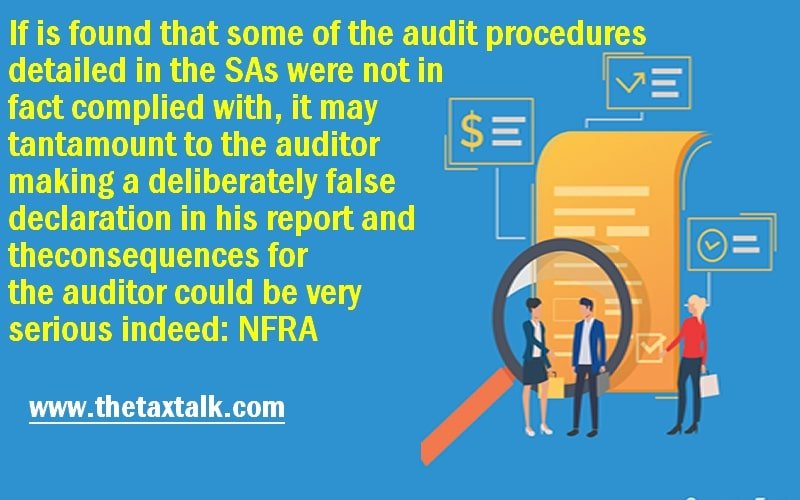If is found that some of the audit procedures detailed in the SAs were not in fact complied with, it may tantamount to the auditor making a deliberately false declaration in his report and the consequences for the auditor could be very serious indeed: NFRA
![]()

![]()